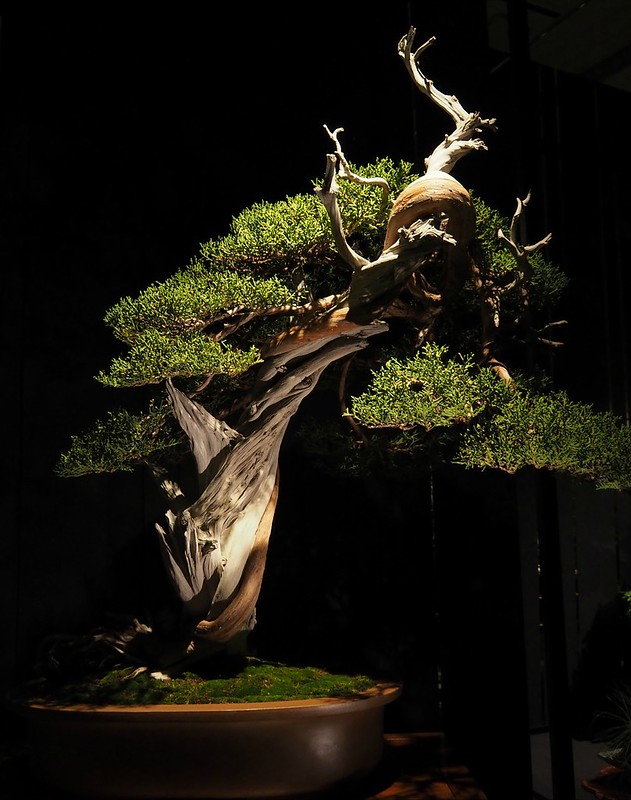
Mountain Hemlock, exhibited by Bob King. Species, Tsuga mertensiana. Estimated age, 150+ years old; time in training, 15 years. Origin, Vancouver Island, British Columbia, Canada.

California Juniper, exhibited by John King. Species, Juniperus californica. Estimated age, 100+ years old; time in training, 10 years. Origin, Mojave Desert.

Buttonwood, exhibited by Michael Fedducia. Species, Conocarpus erectus. Estimated age, 150-200 years old; time in training, three years. Origin, Florida.
This is the artist statement excerpt published in the booklet that went along with the exhibition: This tree was collected in south Florida in the early 80's by Joe Samuels, one of the early pioneers of bonsai in Florida. In my humble opinion, it is by far one of the best representations of the larger buttonwoods that reside on the rocky islands of the Florida Keys that I have seen, and is one of the oldest collected specimens that I have encountered. Some of the trees I find most inspiring stand alone on small coral rock islands off the coast in the Atlantic ocean. They show a true will to survive in the face of adversity, overcoming the lack of a constant fresh water supply. Only to be replenished when a rain shower passes through saturating the stone in which they live. Gripping the coral tightly over the centuries as hurricanes push through, threatening to rip them away from their rocky perch, and still they hold on. They are inundated with salt day after day, and have adapted to excrete the excess through specialized glands at the base of their leaves. Living on the ragged edge of life and death, they exude strength and beauty while sharing the story of their constant struggle through the scars that they have earned. It is my hope to capture this image, if only a glimpse, and to allow the viewer to see this species in all it's glory as I have kayaking the ocean waters.

3 comments:
I had so much fun at the Artisan Cup! Thanks again for tagging along with me. Can't wait to see more.
The bonsai are beautiful... it must take such great care to get them right.
This is what my husband like.... I can see the beauty, but not a common thing to have here in the north of Europe.
Post a Comment